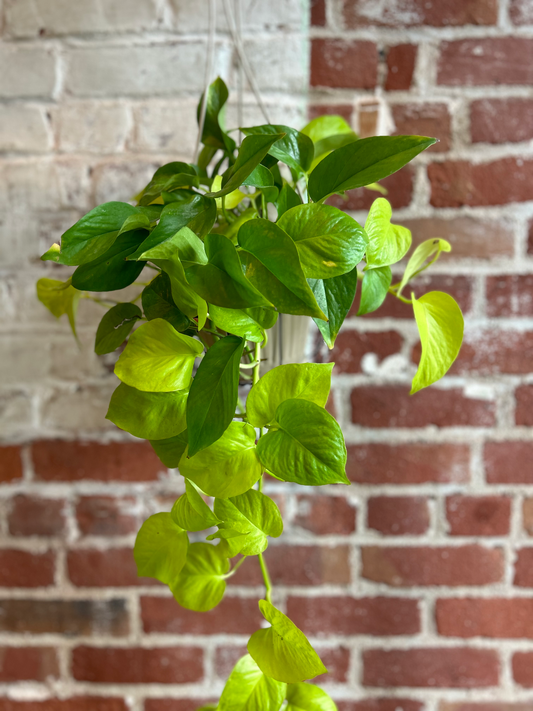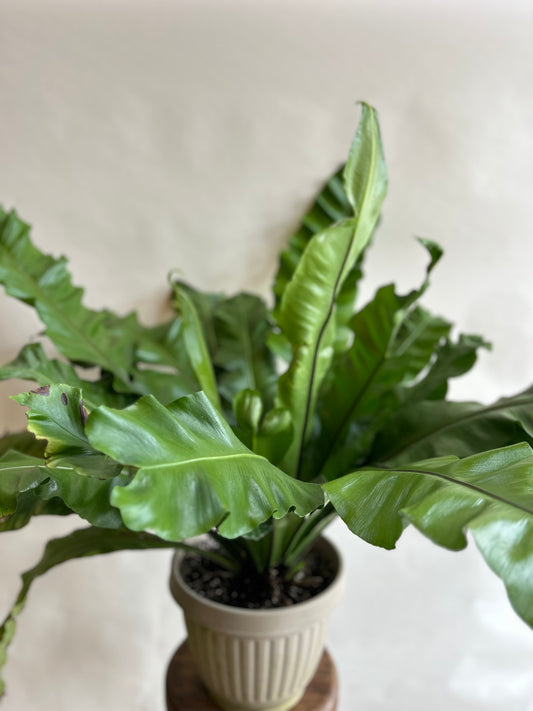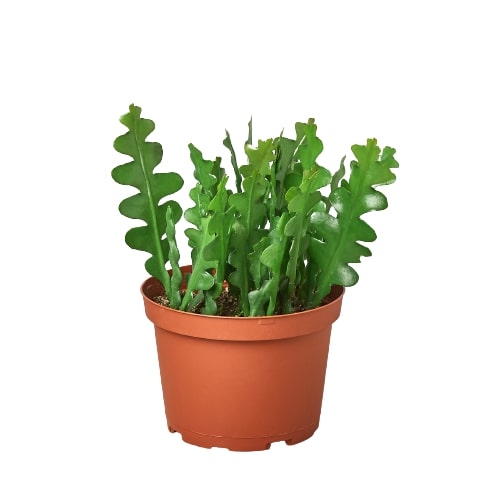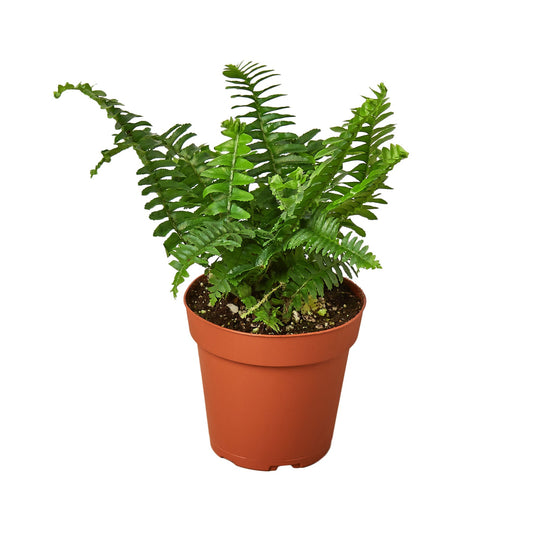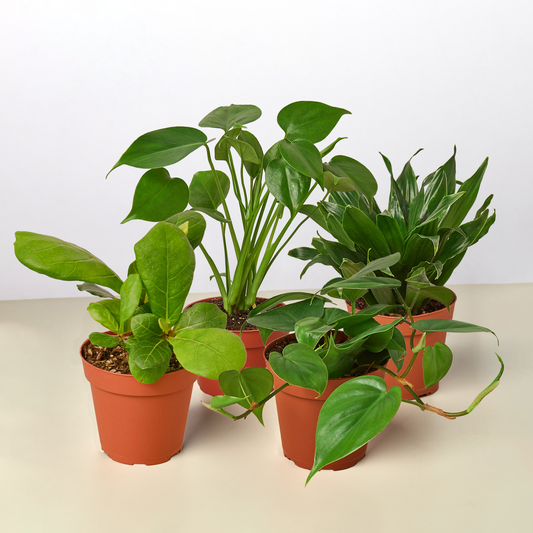Do Lipstick Plants Bloom? A Guide to Lipstick Plant Flowers
Cafe Planta Team
Have you ever wondered if lipstick plants actually bloom? These striking plants, with their glossy leaves and vibrant flowers, are a favorite among plant lovers. But if you're new to caring for them, you might be scratching your head, wondering what it takes to coax these beauties into blossoming.
In this article, we'll dive into the world of lipstick plant flowers. We'll cover everything from their blooming habits and the best conditions for flowering, to troubleshooting common issues that might prevent blooms. Whether you're a seasoned plant parent or just starting your green journey, there's something here for everyone.
What Are Lipstick Plants?
Before we start talking about flowers, let's get to know the lipstick plant a little better. The lipstick plant, or Aeschynanthus radicans, is a tropical evergreen known for its unique, tube-shaped flowers that resemble a tube of lipstick – hence the name! Native to the warm, humid forests of Southeast Asia, these plants are epiphytes, which means they grow on other plants or trees.
The leaves are glossy and vibrant, often dark green, making them quite attractive even when not in bloom. They cascade beautifully from hanging baskets or high shelves, adding a touch of the tropics to any room. But it's those flowers that steal the show when they decide to appear.
Interestingly, lipstick plants are not just about looks. They’re relatively easy to care for, making them a great choice for both beginners and experienced plant people. Their forgiving nature means you don’t have to be a plant expert to enjoy their beauty.
Do Lipstick Plants Bloom Indoors?
Now, onto the million-dollar question: do lipstick plants bloom indoors? The answer is a resounding yes, but with a few caveats. Like any plant, lipstick plants have specific needs that must be met to encourage those vibrant blooms.
In their natural habitat, lipstick plants thrive with plenty of indirect light, warmth, and humidity. Indoors, you can mimic these conditions to some extent, ensuring your plant gets the right environment to flourish. A bright spot with indirect sunlight is ideal; too much direct sun can scorch the leaves, while too little light can prevent blooming.
Humidity is another factor. Lipstick plants love a bit of moisture in the air, so if your home is dry, consider using a humidifier or placing your plant on a tray of pebbles and water (just make sure the pot isn’t sitting directly in water). This helps recreate the humid conditions they’re used to.
Temperature is also important. These plants prefer a consistent range between 65-75°F (18-24°C). Sudden changes in temperature, such as drafts from windows or doors, can stress the plant and affect blooming.
How Often Do Lipstick Plants Bloom?
If you're eagerly waiting for those flowers, you might be wondering how often you can expect them to appear. Generally, lipstick plants bloom once or twice a year, typically in spring and summer. However, with the right conditions, they can sometimes bloom more frequently.
Blooming cycles can vary based on care, environment, and even the specific variety of lipstick plant you have. Some varieties are more prolific bloomers than others, so it’s worth doing a bit of research on your particular plant to know what to expect.
Remember, patience is key. If your plant is healthy and getting the care it needs, those flowers will come. And when they do, they’re worth the wait!
Encouraging Blooms: Tips and Tricks
If your lipstick plant isn't blooming, don't fret. There are several tricks you can try to encourage those elusive flowers. Here are some tips to get you started:
- Light: Ensure your plant is getting plenty of bright, indirect light. A north or east-facing window is often ideal.
- Watering: Keep the soil consistently moist, but not soggy. Overwatering can lead to root rot, while underwatering can stress the plant.
- Fertilizing: Use a balanced, water-soluble fertilizer every month during the growing season (spring and summer) to give your plant the nutrients it needs.
- Pruning: Trim back leggy growth to promote bushier, more floriferous plants.
- Humidity: If your home is dry, increase humidity around your plant as mentioned earlier.
Sometimes, a little extra care and attention are all it takes to coax those blooms out. It might take some trial and error, but your lipstick plant will thank you for it in the long run.
Common Problems and Solutions
Even with the best care, lipstick plants can run into a few common issues that might affect blooming. Here’s how to tackle some of the most frequent problems:
Yellow Leaves
Yellowing leaves can be a sign of several problems, including overwatering, underwatering, or insufficient light. Check your watering schedule and ensure the plant is in a well-lit spot. Adjust as needed, and the plant should start perking up.
No Blooms
If your plant is healthy but not blooming, it might need more light or a boost of fertilizer. Try moving it to a brighter location and ensure you're fertilizing regularly during the growing season.
Pests
Like many houseplants, lipstick plants can sometimes attract pests like aphids or mealybugs. Regularly inspect your plant and treat any infestations promptly with insecticidal soap or neem oil.
Tackling these issues head-on can help your plant thrive and set the stage for a beautiful blooming season.
The Role of Temperature and Seasons
Understanding the role of temperature and seasons in your lipstick plant's blooming cycle can make a big difference. As tropical plants, they prefer warm temperatures and can be sensitive to changes.
During the growing season (spring and summer), maintain consistent warmth and light. However, in the fall and winter, it’s okay to let the plant rest a bit by reducing watering and fertilizer. This rest period mimics their natural cycle and can encourage more vigorous blooming when growth resumes.
Be mindful of drafts, particularly in winter, as cold air can stress the plant. Keep it away from windows or doors that might expose it to chilly temperatures.
Choosing the Right Pot and Soil
Believe it or not, the pot and soil you choose can have a big impact on your lipstick plant's health and blooming ability. Here’s what to consider:
- Pot: Use a pot with drainage holes to prevent waterlogging. Lipstick plants dislike sitting in water, which can lead to root rot.
- Soil: A well-draining potting mix is essential. You can use a standard houseplant mix, or create your own by mixing equal parts peat, perlite, and pine bark.
- Repotting: Repot every 2-3 years or when the plant becomes root-bound. This ensures healthy growth and adequate space for the roots.
By giving your lipstick plant the right home, you’re setting it up for success and more frequent blooms.
Creating a Bloom-Friendly Environment
Beyond the basics of water and light, creating a bloom-friendly environment involves a few extra touches. Here’s how you can make your home a haven for your lipstick plant:
- Grouping Plants: Place your lipstick plant with other humidity-loving plants to naturally increase moisture in the air.
- Decorative Pebble Trays: Add style and function by using decorative pebble trays under your plant. They help increase humidity while adding a touch of flair.
- Room Placement: Choose a spot away from direct drafts, radiators, or air conditioning vents to maintain a stable environment.
These small adjustments can make a world of difference in promoting blooms and keeping your plant happy.
Enjoying the Blooms and Beyond
Once your lipstick plant blooms, take the time to enjoy the vibrant display. These flowers are a testament to your care and effort, and they add a dynamic splash of color to any space.
Beyond the blooms, remember that the journey is just as rewarding. Caring for your lipstick plant helps develop your skills as a plant parent and deepens your connection to nature. Plus, it’s a fun and satisfying way to bring a touch of the tropics into your home.
So, whether your lipstick plant is bursting with flowers or still building up to it, enjoy the process and know that your efforts are worth it.
Final Thoughts
In this article, we've uncovered the secrets to making your lipstick plant bloom. From understanding their natural preferences to creating the perfect indoor environment, you've got all the tools you need to enjoy a flourishing plant.
At Cafe Planta, we're passionate about helping you care for your plants. Whether you're searching for a new plant to add to your collection or need advice, we're here for you. Feel free to email us or send a message on our Instagram. We love connecting with fellow plant lovers and sharing our joy of plants with you.


